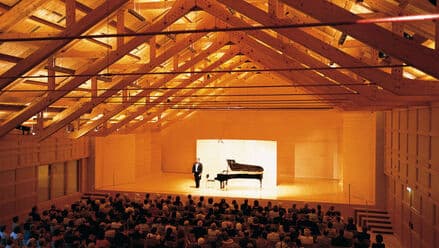American composer John Harbison (b. 1938) was commissioned to write a piece for radio station WGUC (Cincinnati) for their general manager, Ann Santos, for the Cincinnati Symphony’s principal flautist, Randall Bowman. The premiere of the work with Bowman was in June 2002.
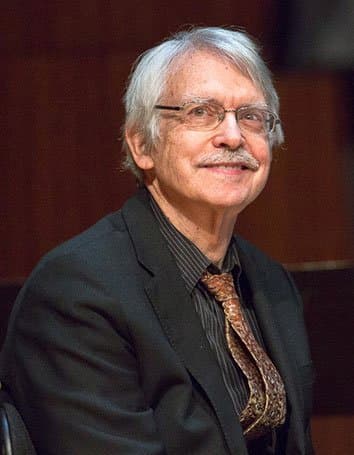
John Harbison, 2016 (photo credit Jonathan Sachs)
Each movement of the work carries the name of an American painter,
I. Bingham
II. Eakins
III. Heade
IV. Homer
V. Hoffman
VI. Diebenkorn
And, although Harbison started with individual works of art in mind, he expanded the titles to that artist’s name only so he could refer to the artist’s general styles rather than single works. Harbison said: ‘I wanted to evoke the artist’s after-images, rather than any of the individual paintings. Just as he hears the details of music (a tune or a harmony), he wants to give a general impression (a mood or a colour) of the paintings. He felt that observing art was not something he did well, and he was least alert in looking, and through his music, he could develop his visual sense.
George Caleb Bingham (1811–1879) was known as the ‘Missouri Artist’. As a politician, he kept Missouri on the Union side during the American Civil War and as an artist, he focused on American frontier life along the Missouri River.
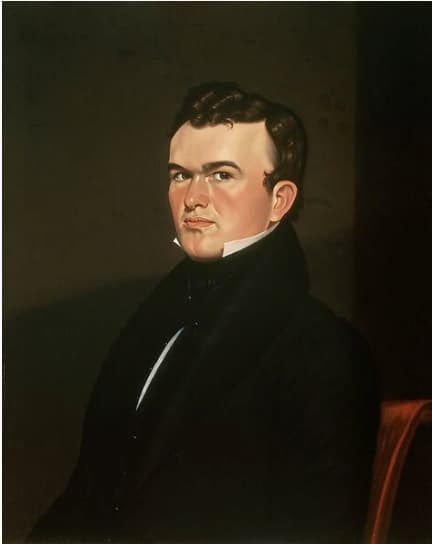
Bingham: Self-portrait, 1835 (private collection)
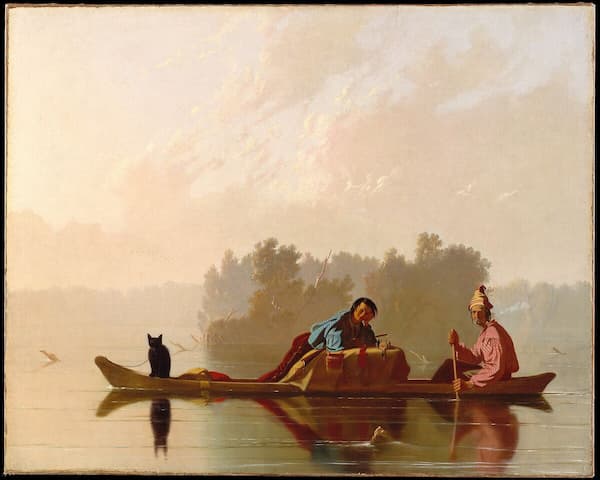
Bingham: Fur Traders Descending the Missouri, 1845 (Met Museum)
His paintings show activities involving the river in the mid–19th century: flatboat men dancing on their boats to the sound of a fiddle, fishermen waiting for a bite, passing time on a boat playing cards, and other river activities. The tones are brown and tan.
John Harbison: Six American Painters – No. 1. Bingham (Mathieu Dufour, flute; Joseph Genualdi, violin; Rami Solomonow, viola; Brant Taylor, cello)
Thomas Eakins (1844–1916) is considered one of America’s leading painters, with his work focused on his home city of Philadelphia. He was a realist painter who loved the outdoors, with paintings depicting rowers on the city’s Schuylkill River or on the Delaware River. His portraits rarely showed the subject sitting placidly but of them in the line of duty, such as his painting of Dr Samuel D. Gross in his medical teaching clinic.

Eakins: The Champion Single Sculls (Max Schmitt in a Single Scull), 1971 (Met Museum)
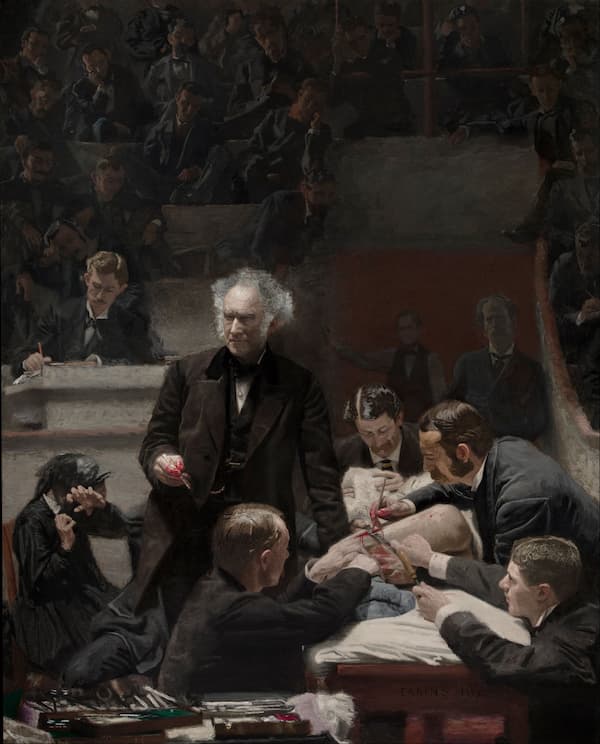
Eakins: Portrait of Dr. Samuel D. Gross (The Gross Clinic), 1875 (Philadelphia Museum of Art)
John Harbison: Six American Painters – No. 2. Eakins (Mathieu Dufour, flute; Joseph Genualdi, violin; Rami Solomonow, viola; Brant Taylor, cello)
Martin Johnson Heade (1819–1904) was known for his paintings of two very different subjects: salt marsh landscapes and smaller subjects of flowers and birds. His coastal settings were an extension of the riverine-based images of the Hudson River School. In this 1859 painting, he captures not only the darkening sky but also the strange glow that the land takes before the storm. Rowboats and sailboats are heading for shelter while the smoking man and his dog await the deluge.
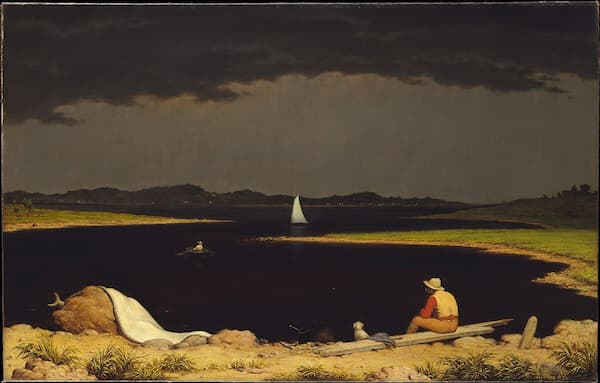
Heade: Approaching Thunder Storm, 1859 (Met Museum)
In capturing the hummingbird and the apple blossoms, we have the feeling that this is a temporary situation, as behind the branch, storm clouds are gathering. His highlighting of the hummingbird on a branch by itself comes from the art theories of John Ruskin.
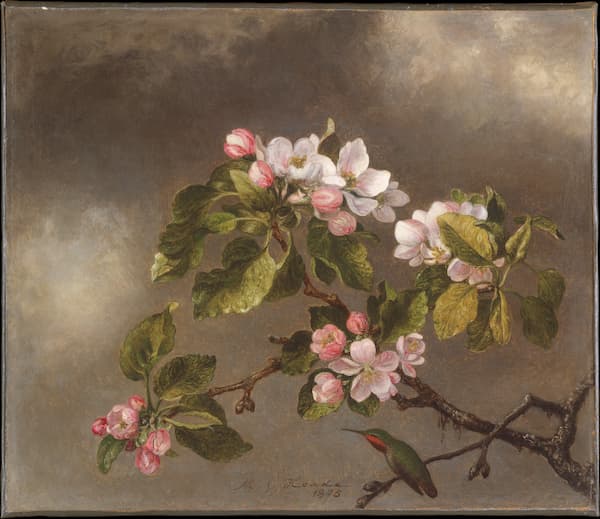
Head: Hummingbird and Apple Blossoms, 1875 (Met Museum)
John Harbison: Six American Painters – No. 3. Heade (Mathieu Dufour, flute; Joseph Genualdi, violin; Rami Solomonow, viola; Brant Taylor, cello)
Winslow Homer (1836–1910) was another landscape painter and is considered one of the leading American painters of the 19th century. His marine paintings are some of his best-known works, many of them based off the coast of New England and others set in the Caribbean. The works are often dramatic, showing storms, people struggling in the water, or water images with pessimistic outcomes, i.e., no one will survive in this surf or this wreck. His depiction of the soon-to-arrive hurricane in the Bahamas includes not only the early arriving winds in the palm trees but also the threatening sky.

Homer: Hurricane, Bahamas, 1898 (Met Museum)
It is thought that the stormy weather may be a visual indication of the then-problematic areas of Cuba and Puerto Rico. In 1898, Puerto Rico was captured by the US as part of the Spanish-American war and still remains an unincorporated territory of the United States. Whereas other territories have become part of the US (Alaska Territory, Florida Territory, Southwest Territory, Louisiana Territory), Puerto Rico remains separate (along with American Samoa, Guam, the Northern Mariana Islands, and the US Virgin Islands).
The Wrecked Schooner has already been abandoned, its mast in the water, and the rocks on the shore perilously close. There’s no sign of rescue, and soon nothing will be left but boards on the shore.
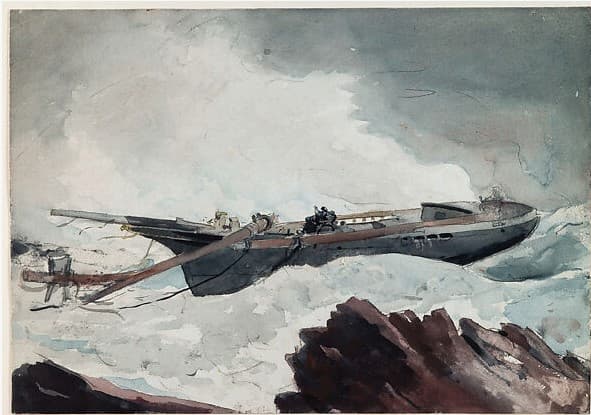
Homer: The Wrecked Schooner, ca 1900 (private collection)
John Harbison: Six American Painters – No. 4. Homer (Mathieu Dufour, flute; Joseph Genualdi, violin; Rami Solomonow, viola; Brant Taylor, cello)
We’ll skip No. 5, Hoffman, because it’s impossible to determine who Harbison was referring to as a painter named Hoffman in the Met collection.
John Harbison: Six American Painters – No. 5. Hoffman (Mathieu Dufour, flute; Joseph Genualdi, violin; Rami Solomonow, viola; Brant Taylor, cello)
Richard Diebenkorn (1922–1993) was active in San Francisco as a painter and printmaker. He was an abstract expressionist best known for his extensive Ocean Park series, which he started in 1967 and concluded with number 140 in 1985.

Diebenkorn: Man Drawing, 1956 (Richard Diebenkorn Foundation)
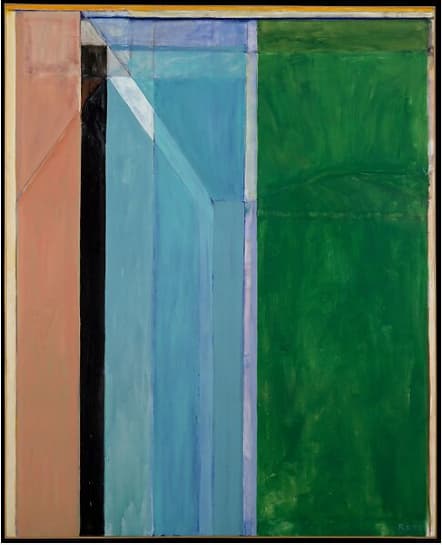
Diebenkorn: Ocean Park (Number 30), 1970 (Met Museum)
John Harbison: Six American Painters – No. 6. Diebenkorn (Mathieu Dufour, flute; Joseph Genualdi, violin; Rami Solomonow, viola; Brant Taylor, cello)
Excepting the unknown Hoffman, Harbison’s collection of American painters seems to focus on painters who made images of water their important subject: rivers, seas, and oceans all are part of the painters’ repertoires. Harbison’s work doesn’t give us the unspecified paintings’ contents but, rather, the feeling of the art – mood and even, perhaps, colours. Each painter occupies their own geographical niche: along the Missouri River, in Philadelphia, at the sea’s edge, in New England and the Caribbean, and in coastal California. Along with painting styles, we also get art in America from East to West and, literally, from coast to coast. Harbison’s take on art makes you want to explore not only the art of America but also the art of depicting art. It doesn’t have to be program music, but it can be emotional as well.
For more of the best in classical music, sign up for our E-Newsletter




